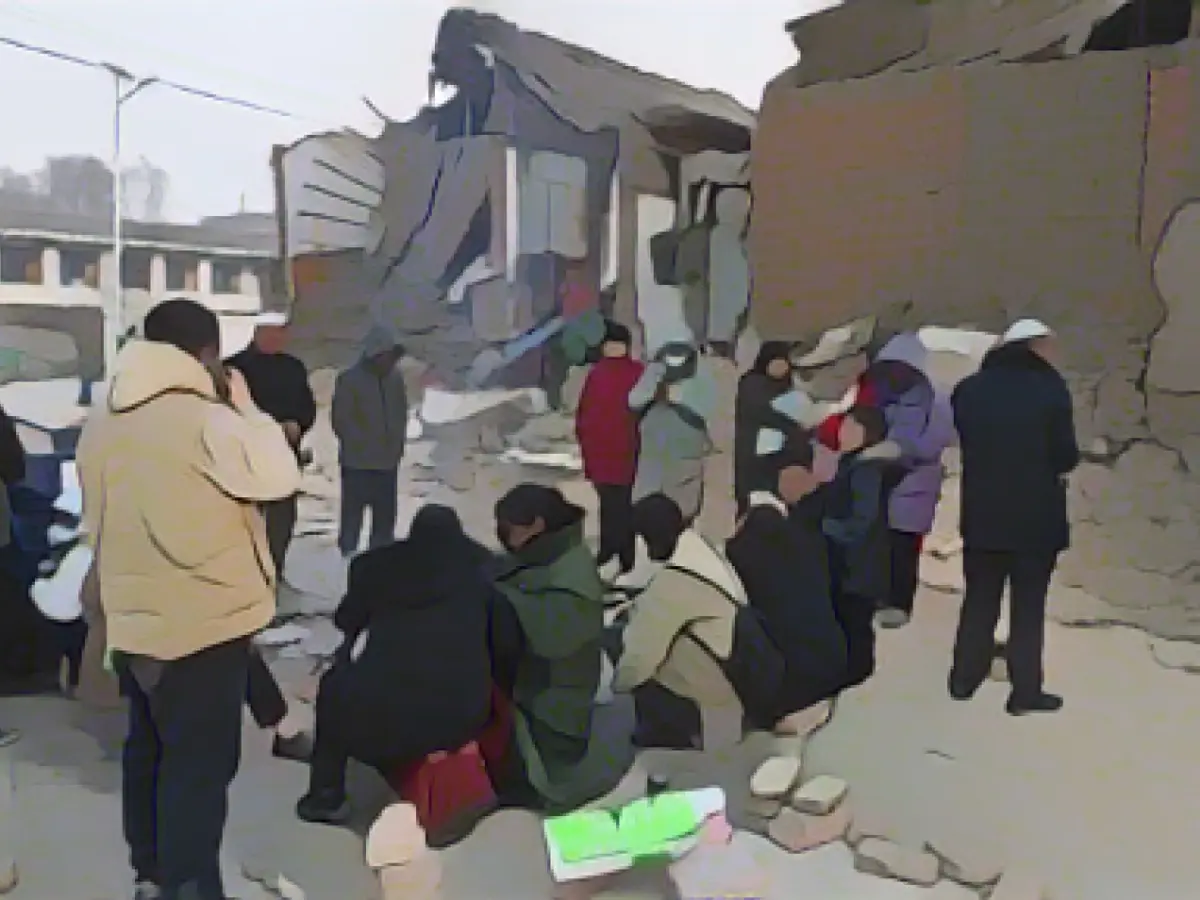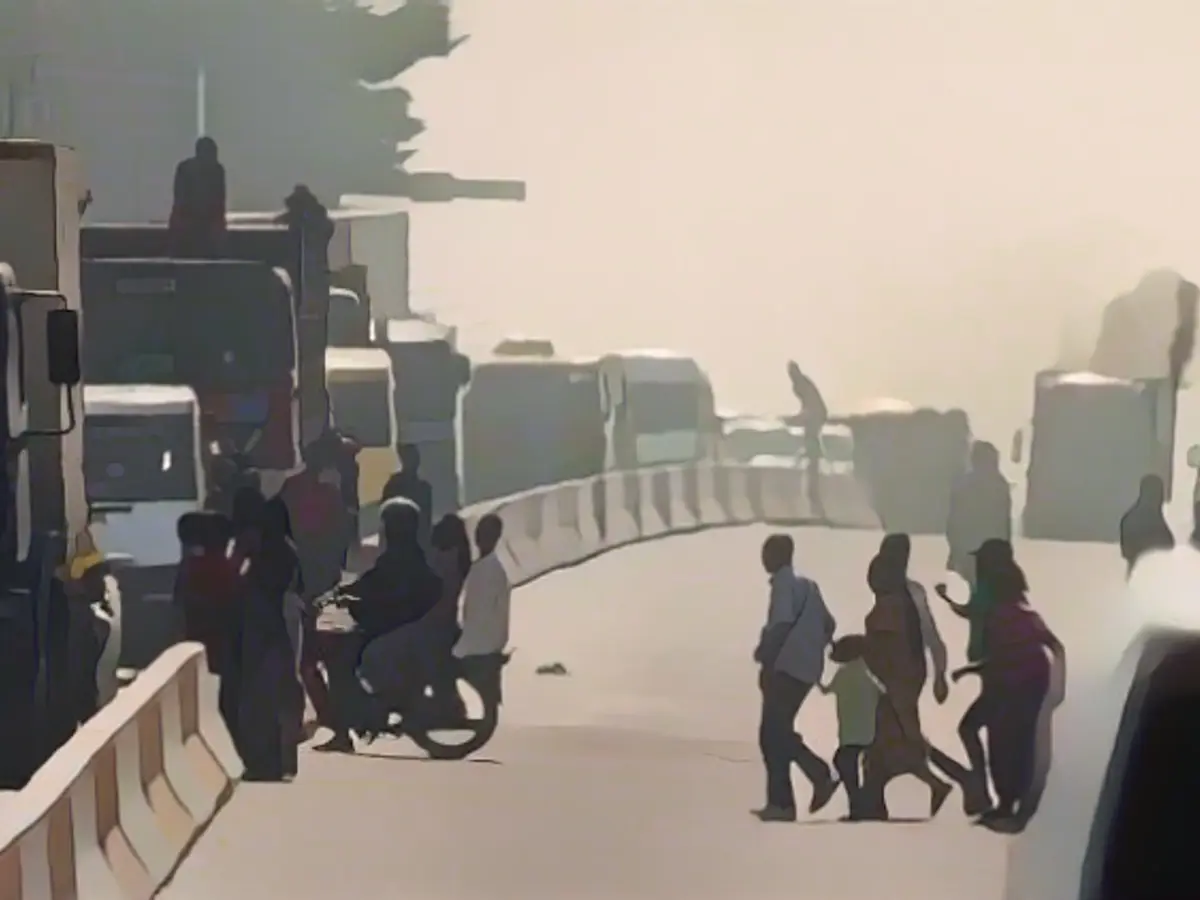Earthquake Takes Lives in Northwest China
As reported by Xinhua, the state news agency, a devastating 6.2-magnitude earthquake has left at least 127 people deceased and countless more displaced. The impact of this disaster stretched beyond the epicenter, with damages reported in several villages throughout the region.
The initial magnitude, as stated by the US Geological Survey (USGS), was 6.0, later revised to 5.9. The quake's epicenter was located approximately 100 kilometers southwest of Gansu's provincial capital, Lanzhou, and around 1,300 kilometers from Beijing. The tremors were felt as far away as Xi'an, a city with a population exceeding 500,000.
With nightfall, rescue workers geared up with flashlights to search the rubble of collapsed houses throughout the affected area. Shortly after midnight, the quake was followed by numerous smaller aftershocks, causing further anxiety among the local population. The Chinese government issued a warning, urging citizens to prepare for additional tremors with a magnitude greater than 5.0 in the coming days.
The USGS reported another earthquake, with a magnitude of 5.2, further northwest in the Xinjiang region on the following day. The quake's aftermath was devastating, with those living in the region struggling against sub-freezing temperatures and a lack of basic services.
In one of the worst-affected villages, reporters from the AFP news agency observed large cracks in the exterior and interior walls of a house, along with a collapsed roof. Resident Ma Wenchang, aged 70, shared her harrowing experience, recounting the sheer force of the quake as unlike anything she had ever experienced before.
The quake left many locals, such as the woman in a video published by the 'People's Daily,' on the brink of tears and shaking with fear. The masses of earth that had fallen onto her home had trapped her inside moments after she had fled the building.
The Chinese government, led by Xi Jinping, vowed to provide assistance to those affected by the earthquake. The US and Chinese governments coordinated rescue efforts, with the Chinese government providing an initial sum of 200 million yuan (around 25 million euros) to aid in recovery efforts.
Supporting the local population, emergency tents and supplies, including blankets, stoves, and instant noodles, were delivered to the affected area. With temperatures plummeting to as low as -17 degrees Celsius, residents gathered around fires on the streets while rescue services set up tents to provide warmth and shelter.
Although the casualty count is substantial, it marks the deadliest earthquake in China since 2014, when over 600 people lost their lives in the southwestern province of Yunnan. Meanwhile, in 2008, a powerful 7.9-magnitude earthquake in Sichuan province claimed over 87,000 lives.
This tragic event serves as a stark reminder of the destructive power of Mother Nature and the importance of emergency preparedness and cooperation in response to such disasters.
Sources: -
Enrichment Data Integration: The information provided does not specifically mention a 6.2-magnitude earthquake in Qinghai, China. Instead, it discusses a 6.8-magnitude earthquake in the Xizang (Tibet) autonomous region, which occurred on January 7, 2025, and resulted in significant casualties and damage.
Casualties and Damage: - Casualties: The earthquake killed 126 people and injured 188 others, with 337 injuries reported in total, according to Chinese state media[1][2]. - Damage: The quake destroyed more than 3,600 houses around Tingri, a rural county with a population of about 60,000 people[1].
Aid and Rescue Efforts: - Rescue Operations: Over 11,000 rescuers were deployed to the quake zone, including firefighters, soldiers, police officers, and professional rescuers. UAVs were used to search for trapped people and deliver supplies[2]. - Relief Efforts: Prefabricated houses were erected to replace tents for the displaced, with 1,000 earthquake-proof and heated houses being sent to Tingri. The area received a stable power supply, and medical teams provided treatment, including mental health services for rescuers and children[2]. - International Aid: There is no specific mention of international aid in the provided sources, but general international responses to natural disasters typically involve coordination with local authorities and the provision of humanitarian assistance.
For the specific details of a 6.2-magnitude earthquake in Qinghai, you would need to refer to different sources that might have reported on such an event. The provided sources focus primarily on the 6.8-magnitude earthquake in Xizang (Tibet) and do not mention a 6.2-magnitude earthquake in Qinghai.








